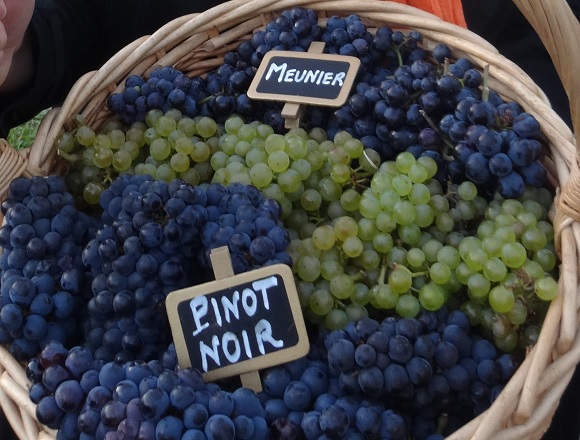
An introduction to Marne Valley champagne, from the western portion of the winegrowing region, where 70% of the vineyards are planted with pinot meunier, the Rodney Dangerfield of champagne grapes. An encounter with grower-producers who give the grape the respect it deserves. And good reasons to attend the annual October wine festival in Chateau-Thierry.
* * *
The leaves have mostly fallen from the vines. Here and there small bunches of grapes, unripe at harvest time, remain. Sweet now but abandoned, they are the remnants of the pinots—noirs and meuniers—fermenting in vats of Olivier Belin’s champagne installation outside Chateau-Thierry, 55 miles east of Paris in the Marne Valley.
Further up the valley, the river flows into the heart of the champagne-growing area, past the town of Epernay and the Mountain of Reims. That’s the area that most travelers think of when considering a champagne wine excursion. Belin’s vineyards don’t lie within the border of the historic Champagne region, rather in historic Picardy, but the appellation for the world’s most evocative sparkling wine extends beyond the historic borders.
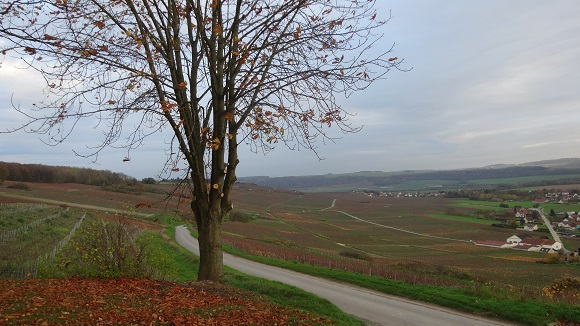
The western portion of the Marne Valley is primarily pinot meunier territory, the lesser known of the three major grapes of the overall champagne winegrowing zone. Meunier represents about one third of the wine that is assembled in various proportions into making champagne. It is often described as the workhorse grape, pulling the plow to add body for the more refined chardonnay (30% of the growing area) and the more noble and familiar pinot, noir (38% of the growing area). To hear some producers in the Reims-Epernay area speak of pinot meunier you’d think that they were embarrass to be pressing it at all, though press it they do. Given little respect as a grape on its own, meunier is the Rodney Dangerfield of champagne grapes.
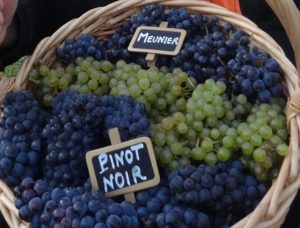
Yet in this portion of the Marne Valley, within 10 miles east and southwest of the town of Chateau-Thierry, where 70% of the vines are pinot meunier, meunier holds its head high. Rather, its growers hold their heads high. Among them are the 40 grower-producers that form an association of Marne Valley winegrowers called the Association des Ambassadeurs du Terroir et du Tourisme en Vallée de la Marne, of which Belin is co-president.
“We are artisan winegrowers,” says Belin. “But that doesn’t mean that we’re tinkerers. Our cellars aren’t necessarily beautiful but it’s the work of the winegrower that one visits here.”
Indeed, this not zone of the sprawling chalk cellars, some of them medieval, even Roman quarries, as one can visit in the city of Reims. This is not the zone of vast underground installations as found in Epernay. This is not a zone of grand cru and premier cru vineyards. For the few (if growing number of) American visitors to this portion of the Marne Valley, the Chateau-Thierry area is less known for champagne than for the WWI battleground of Belleau Wood and the Aisne-Marne American Cemetery beside it. A tremendous American Monument overlooks the point in the valley where the German thrust of 1918 was stopped. The monument also overlooks a slope of champagne vineyard. So a taste of champagne or a deeper initiation into sparkling wine can be combined with war touring in the area.
Fact and figures about Champagne production and consumption
For the American consumer, selecting a champagne comes down to considering the labels of four or five brands, perhaps a few more at your more Francophile wine shop. Yet the champagne winegrowing region is home to 15,800 grape growers and 12,000 brand names. Only a handful of brands, those with large advertising budgets, reach most states of the union, though over the past decade medium and small houses and grower-producers have slowly been making their way into major markets.
More than half (52%) of all champagne is consumed in France. That doesn’t mean that the French are more festive than others, rather that champagne isn’t reserved for festivity in France but also serves as an aperitif at many gatherings, both casual and formal, social and festive. While bottles are available in a wide price range, there are plenty of worthy champagne available at under 30€, including a significant direct producer-to-consumer market offering good value bubbly for under 20€, as is the case of many of the champagne produced in the Marne Valley.

Even in France Marne Valley champagne is little known. Most people are unaware that the growing area extend this close to Paris, this close to brie cheese territory. Nevertheless, some of the grapes from these vineyards go into well-known labels. Belin, for example, sells a portion of his harvest to négotiants manupulants who buys grapes, juice or wine to make champagne on their own premises that they then market under their own label. All of the major champagne houses work that way. They may own some vineyards but need far more grapes than their own can provide.
Belin himself is a récoltant manipulant or grower-producer, meaning that he makes champagne on his own premises from the grapes of his own vineyards and under his own label.
The third major type of player in the wine business is the cooperatives, which produce champagne collectively, then sell them under a collective or individual label. There exist in the growing region 320 champagne houses and 39 cooperatives along with an astounding 4461 grower-producers, according to the Comité Champagne, the champagne trade association.
Last year, the U.S. ranked second in champagne’s export market (20.5 million bottles) after the U.K. (34.2 million) and before Germany and Japan (just under 12 million). Meanwhile, there are currently about 1.4 billion bottles in storage in the region.
Those are impressive numbers, but the most telling indicator of the difference between the French and the export markets is that in France 43% of champagnes bottles sold are produced by grower-producers or cooperatives whereas in the export market only 13% comes from those players. In other words, you’ll likely need to travel to discover them.
Champagne Gérard et Olivier Belin
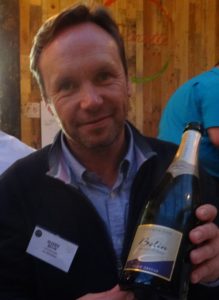
As is often the case with small producers, Belin’s father and grandfather were grape farmers, selling their crop to others. His father, Gérard, then began selling champagne through a cooperative before producing champagne from his own grapes, under his own name. Having trained as an oenologist, Olivier began making wine with his father in 1997: tending the vines, harvesting and pressing, assembling wines, dosing sugar. He took firm hold on the reins of the business about five years ago while he continues to consult his father for his opinion whether in his vineyards or in the cellar. The label of Champagne Belin indicates both names. Olivier’s wife Katty is also involved in the family business.
Olivier Belin’s grandparents owned four hectares (just under 10 acres), to which his parents added two more. Belin now produces about 40,000 bottles per year, 60% of which he sells directly to consumers. The average grower-producer in the area makes about 20,000 bottles per year. Altogether the association’s members produce about one million bottles per year. That’s a drop in the champagne bucket consider that 310 million bottles were sold in 2015 for the entire winegrowing region. (Overall, Marne Valley vineyards represent about 10% of the overall champagne vineyard zone.).
With a hectare of champagne-grape vineyard now selling for 1-1.2 million euros, grape growers may be sitting on a gold mine, but it isn’t land wealth that one encounters in the area, rather the work and passion of these grower-producers.
To visit Belin’s installations and taste his sparkling wines in his little tasting room is to glimpse the passion of an artisan involved in his product from start to finish and from tradition to renewal. It’s the opportunity to understand the choices that winegrowers make in producing their product range. Belin, for example, appreciates the use of some oak barrel aging in his assembly. The men and women in the winegrowers association that Belin co-presides may not be tinkerers, but in encountering several of them it becomes clear that they enjoy the occasional risk of the fiddling with their grape juice, such as to create “micro-cuvées” of only a few thousand bottles.
Belin’s champagnes and those of many other winegrowers in the Marne Valley are proof that proper champagnes for celebration or for a friendly aperitif can be found for under 22€. However, it isn’t so much the price of champagne that makes visiting these local worthwhile (though Paris residents might want to take the opportunity to stock up) but the opportunity to discover the humanity behind the production of a world’s most famous sparkling wine.
Furthermore, there’s a fascinating diversity of champagnes produced in the Marne Valley, within their natural reliance on pinot meunier. On a daytrip from Paris—and certainly one can stay longer—the wise wine traveler will visit two or three winegrowers over the course of the day or the afternoon (if combined with war touring) to appreciate the diversity of approaches in the area.
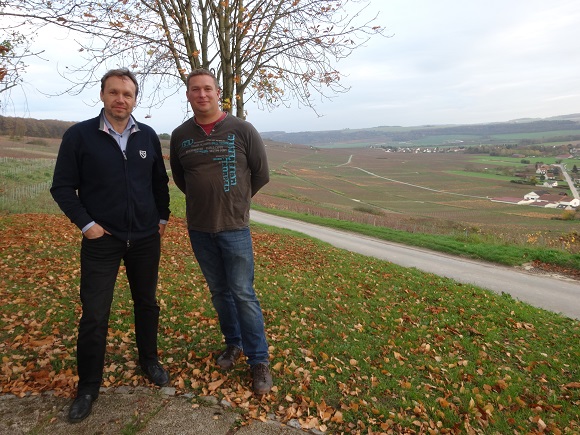
Champagne Marteaux
A bench on the hill above the village of Azy-sur-Marne, four miles southwest of Chateau-Thierry, offers a view of the amphitheater of fields surrounding the village. This one of the prettiest views in the valley, though few come this way. It isn’t the view that might lead a traveler here so much as a visit to winegrower Olivier Marteaux.
Previously, polyculture was a way of in the area; farming meant wheat, corn and beets. Those crops are still grown in the area but vineyards is what one most notices when driving through the valley.
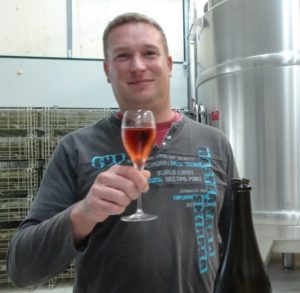
Olivier Marteaux’s ancestors were polyculture farmers until the 1950s. His grandfather then developed a wine nursery, selling young vines to grape farmers. In the 1980s the family began keeping their vines so as to grow grapes themselves. They made champagne with the local cooperative before eventually using their grapes exclusively for their own production. With 9 hectares (22.2 acres) of vines—65% pinot meunier, 20% chardonnay, 15% pinot noir—Marteaux currently produces 40-50,000 bottles per year.
Marteaux concocts what might be called connoisseur’s champagnes in the sense that they provide a deep, rich taste of terroir that one doesn’t always associated with bubbly. His vintages have been aged for at least six years prior to disgorgement and typically have low sugar content, such as the 2008 extra brut with 2 grams of sugar for a wine that’s 60% pinot meunier, 20% chardonnay and 20% pinot noir.
Among his four types of champagne he makes a rose de saignée, 100% pinot noir from a single parcel. Its tart fruitiness of Marteaux’s rose may not reflect what we’re accustomed to a rose champagne, but it is a taste that will give the wine-curious traveler a sense of the variety available in champagne wines in general and in the Marne Valley’s in particular. A 100% pinot noir champagne is a rarity in these parts and it’s interesting to compare Marteaux’s rose with Belin’s rosé de saignée, which is 100% pinot meunier.
Saignée is the more erudite way of producing rose since it requires precise pressing in order to obtain the proper color from the skin. In champagne production the preferred and allowed method for making rose is by adding red still wine (from pinot meunier or pinot noir) in assembling the wine so as to adjust the color along with the taste. Belin also makes a rosé d’assemblage. More than 90% of rose champagne gets its color that way.
Marteaux’s wife Laetitia if fully involved in the business, just as is Katty Belin is involved in the Belin family business. These are truly family affairs, which is the case of the vast majority of members of the local winegrowing association.
The Champagne et Vous wine festival
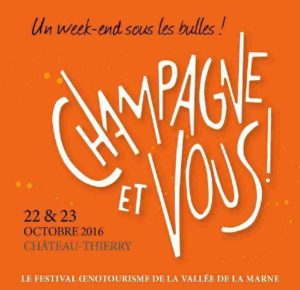 A great opportunity to meet producers on an easy daytrip from Paris is at the annual wine festival Champagne et Vous (Champagne and You) organized by the Marne Valley winegrowers association. The weekend festival takes place in late October in Chateau-Thierry on the site of the ruins of Thierry’s chateau. It’s a largely local event that invites the area’s population to understand the role of winemaking in the local economy and affirm the place of these grower-producers in the champagne-making landscape.
A great opportunity to meet producers on an easy daytrip from Paris is at the annual wine festival Champagne et Vous (Champagne and You) organized by the Marne Valley winegrowers association. The weekend festival takes place in late October in Chateau-Thierry on the site of the ruins of Thierry’s chateau. It’s a largely local event that invites the area’s population to understand the role of winemaking in the local economy and affirm the place of these grower-producers in the champagne-making landscape.
See Champagne et Vous for further information about the festival including portraits and addresses of participating winegrowers.
Addresses and further information
Champagne Gérard et Olivier Belin
30A Aulnois
02400 Essômes-sur-Marne
Tel. 03 23 70 88 43
Champagne Marteaux
6 Route de Bonneil, 02400 Azy-sur-Marne
Tel. 03 23 82 92 47
The Chateau-Thierry Tourist Office, situated near the House of France-America Friendship (see this article) can help those travelers who arrive with any prior appointments but would like to make last-minute arrangements to visit Marne Valley winegrowers.
For further information about war touring and other sights in the area, also see this article on France Revisited.
A B&B and lunch suggestion: Chateau de la Marjolaine
Two miles southwest of Chateau-Thierry, Jean-Pierre and Bruno have transformed this manor house by the river into an attractive B&B, restaurant and champagne bar.
27 Hameau d’Aulnois
02400 Essômes sur Marne
Tel. 03 23 69 77 80 or 06 60 39 98 79
© 2016, Gary Lee Kraut

